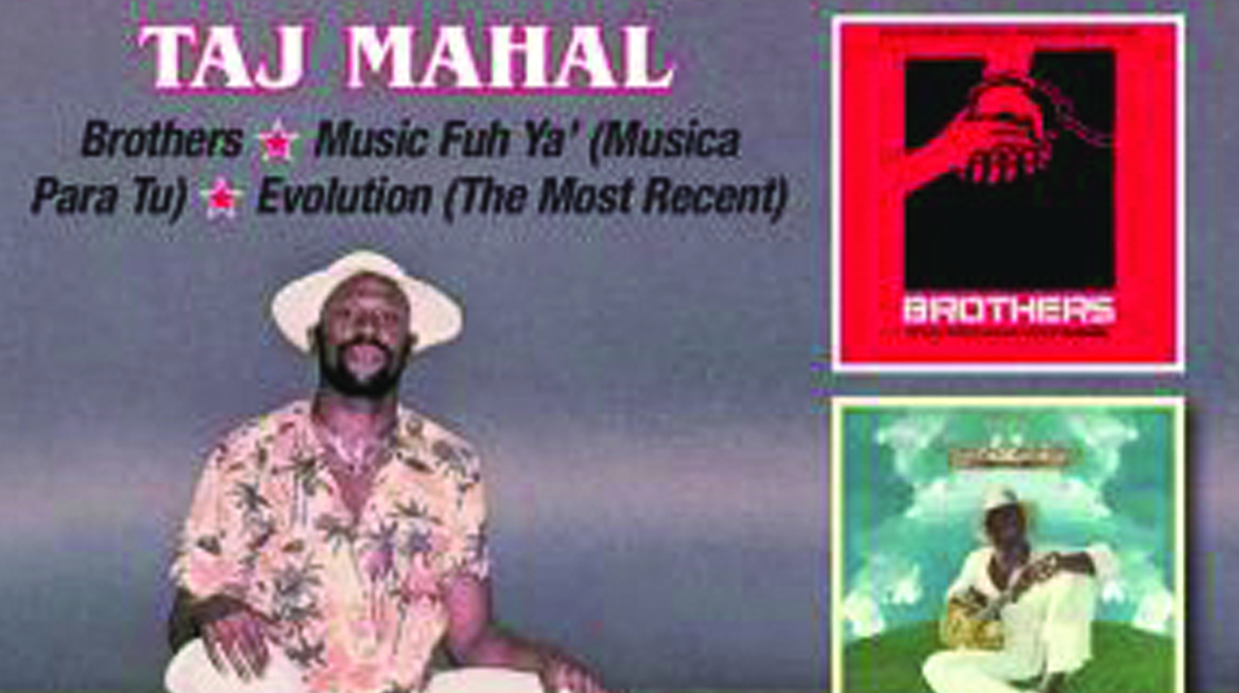Life-long genre-hopper gets lost in a Bermuda Triangle of Caribbean beats.
These three albums came from Taj Mahal’s brief stint as an artist for Warner Brothers in 1977 and 1978. For anyone whose main reference for Mahal are his late 60s classics, the style and timbre of this triptych may come as a surprise. The singer wanted to expand his musical horizons and, in particular, to explore his Caribbean heritage, but the results are not inspiring.
In a nutshell, this means steel drums everywhere, all the time. Brothers is the soundtrack to the film of the same name, a drama based on the lives of two prominent civil rights activists. Unfortunately, most of the music sounds half-finished – a recurring problem with all three records – with too many tracks built around one refrain repeated ad infinitum. Most disappointingly, Taj Mahal’s singing is often flat and out of key.
Music Fuh Ya’ (Musica Para Tu) is cut from the same cloth, with the steel drums proving inescapable throughout. Freight Train is one of the stronger tracks with Mahal tackling country blues, but still those steel drums insist on coming along for the ride. Baby, You’re My Destiny has a playful, ragtime vibe, until… you guessed it. And so it goes on. At least that nagging percussion makes sense in the calypso of Sailin’ Into Walker’s Cay, with Mahal sounding spookily like Sebastian the crab singing Under The Sea in The Little Mermaid. Curry is a misguided move into disco, meanwhile – very much a one-idea track.
Evolution (The Most Recent) is the best of the three records, although it too can suffer from overly simplistic songwriting. There’s reggae in Queen Bee and a solid attempt at Motown-style soul in Lowdown Showdown, but the tongue-twisting The Most Recent (Evolution) Of Muthafusticus Modernusticus is an uninspired jam that aims for funkadelic territory but falls far short of George Clinton’s inspired lunacy.
The Big Blues finally puts Mahal back where he belongs, barking like Howlin’ Wolf – even as those bloody steel drums crash the party. While the bluesman’s desire to explore diverse influences is laudable, these three albums are definitely not a patch on his classic blues records.

